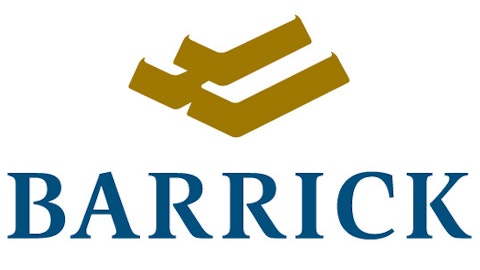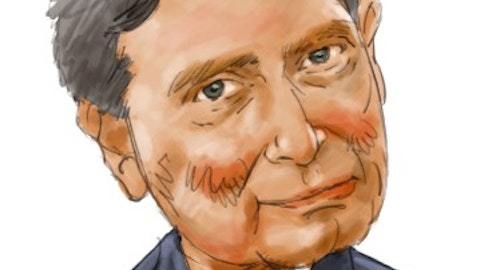It’s far from scientific, but perhaps it’s worth paying attention to: Is there a reality TV show indicator?
Investors have long cited, at least anecdotally, the existence of a newspaper indicator — that is to say, when the front page of a mainstream newspaper is dedicated to the market, the top (or bottom) is in.
Reality TV as a cultural phenomenon is still somewhat new — perhaps 15 or 20 years old. That said, the rise of some shows has definitely coincided with the tops of markets.
Home flipping shows and the real estate bubble
In hindsight it’s obvious, but back in 2005, the existence of a real estate bubble was still very much open for debate. (David Lereah’s book Are You Missing the Real Estate Boom? is proof enough of that.)
The first season of Discovery Home Channel’s show Flip That House debuted in 2005. Each episode detailed a group of people’s efforts to flip a house — initial purchase, remodeling and final sale.
A&E had a similar show, Flip This House, which debuted the same year, as did TLC’s The Property Ladder — another show based on house flipping.
During the boom, flipping houses was a way to make a great deal of money — with home prices rapidly appreciating, speculating on homes made sense. Shares of PulteGroup, Inc. (NYSE:PHM), one of the largest US home builders, peaked near $49 in 2005, before later cratering to under $4.
Interestingly enough, as The Washington Post notes, house flipping has returned. In the first half of 2012, the popularity of flipping houses increased 25% from the prior year. Since the beginning of 2012, PulteGroup is up more than 200%, and now trades with an above market price-to-earnings ratio of nearly 25.
But PulteGroup, Inc. (NYSE:PHM) shares aren’t the only thing that have rebounded — home flipping shows are back! A&E’s Flipped Off is a Houston-based flipping show, while Spike’s Flip Men was about flipping houses (it has been cancelled). HGTV’s Property Brothers isn’t directly about flipping houses, but does center around buyers acquiring and remodeling existing homes.
While few analysts are calling for a second American housing bubble, a couple are cautious on PulteGroup, Inc. (NYSE:PHM). JP Morgan downgraded the stock at the end of April, arguing that Pulte was poised for below average order growth through the end of next year.
Goldman Sachs reinitiated coverage last month with a Sell rating and $18 price target. Goldman expects Pulte’s margins to improve, but believes the company will have difficulty growing in the near future.
Gold Rush and the gold bubble
Economist Nouriel Roubini has championed the bursting of the gold bubble. Yet, unlike housing, the existence of a gold bubble is still open for debate. Nevertheless, it is interesting to note the rise of a gold-based reality TV show.
In December 2010, the Discovery Channel debuted Gold Rush, a show about a group of men digging for gold in Alaska. The spot price of gold peaked just nine months later, briefly breaking above $1900 an ounce.
Along with the spot price, shares of the SPDR Gold Trust (ETF) (NYSEMKT:GLD) peaked around $183. Since then, shares are down over 33%.
GLD is the most widely known gold ETF out there, and largely trades in line with the price of gold. Although it has a 0.40% expense ratio, it’s one of the best ways to play the price of gold directly without getting involved in the actual bullion market.
Gold-based reality shows haven’t caught on to the same extent housing-based shows did, but History Television’s Yukon Gold debuted this year — the show largely mirrors Gold Rush’s premise.
If gold prices do fall further, and observers looking back firmly categorize its meteoric rise as an instance of an asset bubble, they’ll be able to point to these gold-based reality shows as an indicator.
Doomsday Preppers and the gun bubble
Since President Obama was first elected, the firearms industry has seen record demand for guns and ammunition. Some of this demand is likely based on the fear of future restrictive laws — better to buy your guns today, for you might not be able to get them tomorrow.
But a fair amount of demand may be originating from the survivalist movement, which has seen a surge in popularity following the 2008 financial crisis.
A number of media outlets have noted the growing trend, such as Popular Mechanics and AZ Central. At the same time, retail giants like Costco are cashing in, offering long-lasting food crates aimed at survivalists.
And like gold and house flipping, reality TV has gotten in on the survivalist trend. National Geographic’s Doomsday Preppers chronicles families preparing for the coming apocalypse — a practice which frequently includes stockpiling large amounts of guns and ammunition.
Discovery Channel offers a similar take on the trend — its Doomsday Bunkers is a show about a company that builds underground homes for survivalists.
How much of the growth in firearm demand is coming the survivalist movement? It’s hard to say. At any rate, shares of Sturm, Ruger & Company (NYSE:RGR) have certainly benefitted, rallying well over 500% in the last five years.
Either way, at some point, it’s likely that the people stockpiling firearms will have to stop. Guns are the very definition of durable goods — they can easily outlive their owners. And while few buy a single gun, there’s definitely a ceiling on demand.
This belief in peak gun demand may be behind Ruger’s persistently high short interest. Within the last six months, Ruger has carried a short interest as high as 40%.
Today, short interest is around 25% — still high, but far removed from peak levels. The stock offers an attractive 3.50% dividend yield, but if the bears are ultimately right, gun demand should eventually plunge, taking Ruger’s shares with it.
The tastiest bubble of all
Bakeries dedicated to a single good — cupcakes — have exploded in popularity in recent years. Of course, there have been plenty of cupcake-orientated shows to go along with the trend.
There’s Food Network’s Cupcake Wars, TLC’s DC Cupcakes, and WE TV’s Cupcake Girls. All shows center around the production of the small pastry.
While the fallout from the bursting of the cupcake bubble might have hurt small business owners the most, there is one publicly traded stock that has suffered.
Crumbs Bake Shop had its IPO in the summer of 2011, near $13 per share. The chain has locations in 13 US states, mostly on the east coast, and sells gourmet cupcakes.
Evidently, Crumbs’ ownership picked the perfect opportunity to cash out. Shares have mostly traded in one direction since the IPO — down — and currently sit around just $1.23. As the Wall Street Journal noted back in April, people might just be suffering from gourmet cupcake burnout.
Realty show indicators
Don’t get me wrong, I’m not saying investors should turn to reality TV to make their investment decisions. However, reality TV has an impressive ability to highlight major, societal fads.
If one suspects that a trend currently gripping American society is just a fad — and there’s some economic bubble tied to that fad — a string of related reality TV shows might just be the perfect confirming evidence.
No Pitch
Joe Kurtz has no position in any stocks mentioned. The Motley Fool owns shares of Sturm, Ruger & Company (NYSE:RGR).
The article The Reality TV Show Indicator originally appeared on Fool.com.
Salvatore “Sam” is a member of The Motley Fool Blog Network — entries represent the personal opinion of the blogger and are not formally edited.
Copyright © 1995 – 2013 The Motley Fool, LLC. All rights reserved. The Motley Fool has a disclosure policy.






